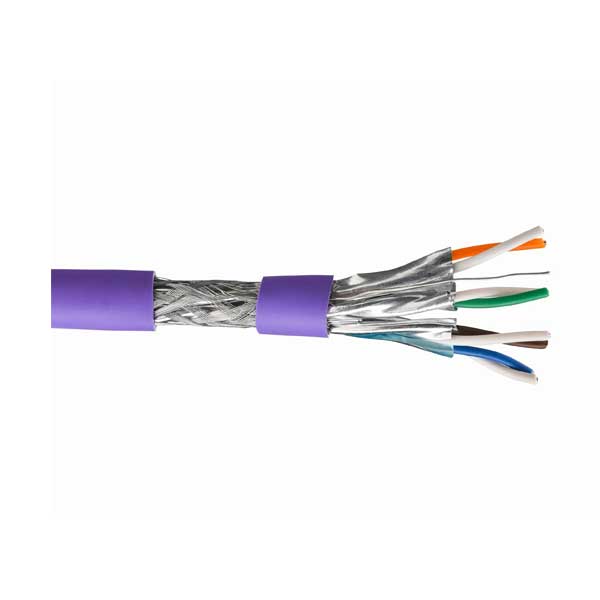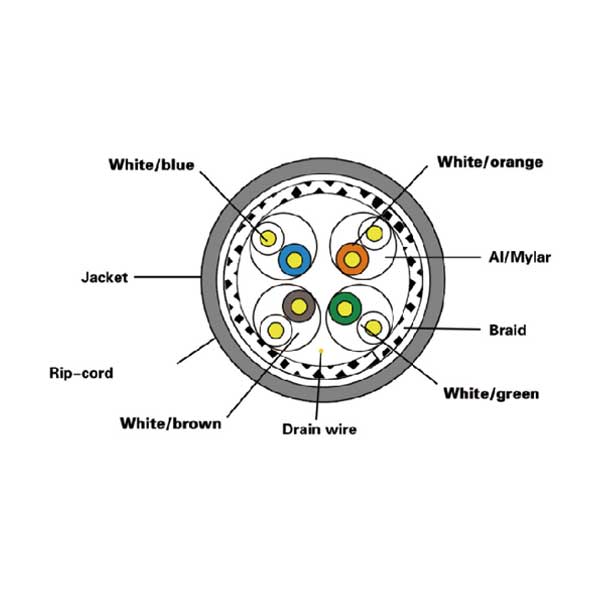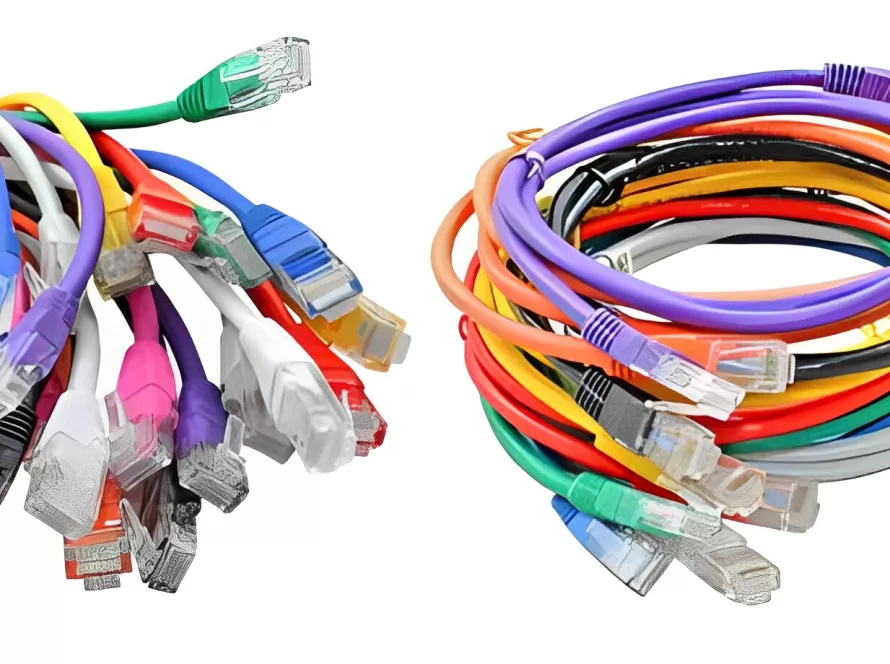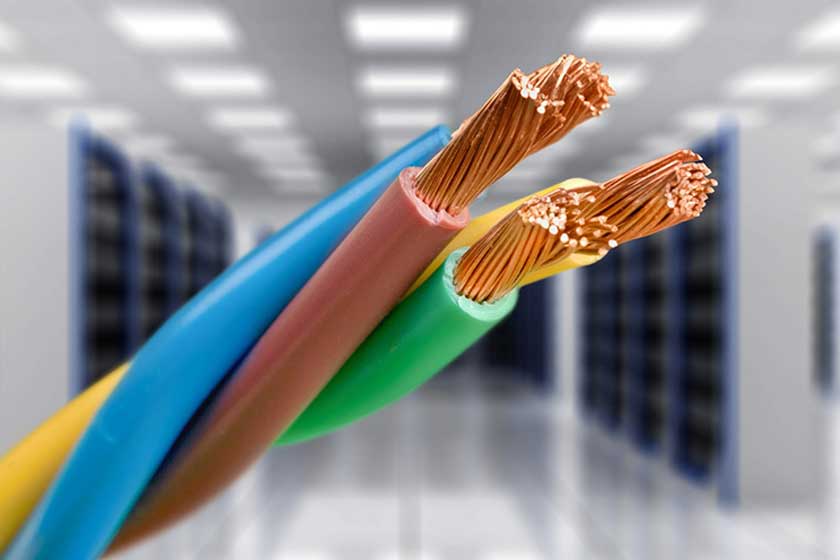Unleashing The Power of Cat 7e Ethernet Cables

In today’s rapidly evolving digital landscape, a strong and reliable internet connection is essential for our daily lives. Whether you’re working from home, gaming online, streaming 4K videos, or simply browsing the web, a robust network connection is crucial. This is where Cat 7e Ethernet cables come into play. While Cat 5e and Cat 6 cables have served us well for years, Cat 7e cables represent a significant leap in terms of speed, performance, and shielding capabilities. In this comprehensive guide, we’ll explore the world of Cat 7e Ethernet cables, delving into their benefits, specifications, and how they can enhance your network experience.

Chapter 1: What Are Cat 7e Ethernet Cables?
Cat 7e Ethernet cables, short for Category 7 enhanced, are a type of twisted-pair copper cabling designed to transmit data at incredibly high speeds. These cables are the successor to Cat 6 and Cat 6a cables and offer several significant improvements. The “e” in Cat 7e stands for “enhanced,” signifying its superior performance compared to previous iterations.
1.1. Construction
Cat 7e cables are typically constructed with four twisted pairs of copper wires, similar to their predecessors. However, what sets them apart is their improved shielding and the fact that each pair is individually shielded, offering superior protection against electromagnetic interference (EMI) and crosstalk. The additional shielding provides a stable and uninterrupted data transmission, making them ideal for high-speed applications.
1.2. Speed and Bandwidth
Cat 7e cables are designed to support data transmission speeds of up to 10 Gbps, which is significantly faster than Cat 6 and Cat 6a cables. This increase in speed makes Cat 7e cables suitable for demanding applications like 4K video streaming, online gaming, and data-intensive tasks. Additionally, they offer a bandwidth capacity of 600 MHz, further enhancing their data-carrying capabilities.
1.3. Backward Compatibility
One of the notable advantages of Cat 7e cables is their backward compatibility. This means they can be used with devices and network components that require lower categories, such as Cat 5e and Cat 6. However, to fully leverage the capabilities of a Cat 7e cable, it’s essential to have compatible equipment and connectors.
Chapter 2: The Advantages of Cat 7e Ethernet Cables
Cat 7e Ethernet cables offer a range of benefits that can greatly improve your network performance and reliability. Let’s delve into these advantages:
2.1. Faster Speeds
The primary advantage of Cat 7e cables is their ability to support 10 Gbps data transfer speeds. This is especially beneficial for users with high-bandwidth requirements, such as gamers, content creators, and businesses that rely on large file transfers.
2.2. Enhanced Shielding
Cat 7e cables provide exceptional shielding, which is crucial for maintaining a stable connection in environments with high EMI or crosstalk. This shielding not only ensures data integrity but also reduces the likelihood of network interruptions.
2.3. Reduced Latency
Low latency is essential for online gaming and real-time applications. With Cat 7e cables, you can experience minimal lag and latency, resulting in a smoother and more responsive online gaming or video conferencing experience.
2.4. Future-Proofing
Investing in Cat 7e cables is a smart choice for future-proofing your network infrastructure. As network technologies continue to evolve, having cables that can handle increasing data demands will save you from frequent upgrades.
2.5. Long-Distance Transmission
Cat 7e cables are known for their ability to transmit data over longer distances without signal degradation. This makes them suitable for larger homes, offices, and data centers.

Chapter 3: How to Install Cat 7e Ethernet Cables
Installing Cat 7e Ethernet cables is a straightforward process, similar to installing other Ethernet cables. Here’s a step-by-step guide to help you set up your Cat 7e cables:
3.1. Gather Your Tools
Before you begin, make sure you have the necessary tools and materials, including Cat 7e cables, RJ45 connectors, a crimping tool, a cable cutter, and a network tester.
3.2. Measure and Cut
Measure the required length of the cable and cut it to size using a cable cutter. Be sure to leave a little extra length to account for any unforeseen changes during installation.
3.3. Strip the Cable
Carefully strip about 1.5 inches of the cable’s outer sheath using a cable stripper, exposing the individual twisted pairs and the foil shielding.
3.4. Terminate the Cable
Terminating the cable involves attaching RJ45 connectors to each end. Arrange the wires according to the T568A or T568B wiring standards and secure them in place using a crimping tool.
3.5. Test the Connection
After you’ve terminated both ends, use a network tester to ensure that the cable is properly wired and free from any faults. This step is crucial to guarantee a reliable connection.
3.6. Install and Secure
Once you’ve confirmed the integrity of the cable, you can install it. Ensure that the cable is well-secured to prevent kinks or damage, and avoid bending it at sharp angles.
Chapter 4: Common Myths and Misconceptions
As with any technology, there are common myths and misconceptions surrounding Cat 7e Ethernet cables. Let’s debunk a few of these:
4.1. Cat 7e vs. Cat 8
Some people confuse Cat 7e with Cat 8 cables. Cat 8 cables are a step up from Cat 7e in terms of speed and performance, supporting 25-40 Gbps data transfer rates. However, Cat 8 cables are relatively new and less common, whereas Cat 7e cables offer a significant performance boost over their predecessors.
4.2. Cat 7e for Home Use
While Cat 7e cables are often considered overkill for typical home networks, they can benefit users with demanding needs, such as gamers or individuals working with large media files. For most homes, Cat 6a cables might be sufficient.
4.3. Expensive Equipment Required
It’s a misconception that you need expensive routers and switches to utilize Cat 7e cables fully. While high-quality networking equipment can enhance performance, Cat 7e cables are still compatible with standard routers and switches.
Chapter 5: Conclusion
Cat 7e Ethernet cables are a significant step forward in network technology, offering faster speeds, enhanced shielding, and a wide range of advantages for users with high-bandwidth requirements. While they might be more than what the average home user needs, for professionals and enthusiasts in need of top-notch network performance, Cat 7e cables are a solid investment. By understanding the construction, advantages, installation process, and debunking common myths, you’re well-equipped to make an informed decision about whether Cat 7e Ethernet cables are right for you.



